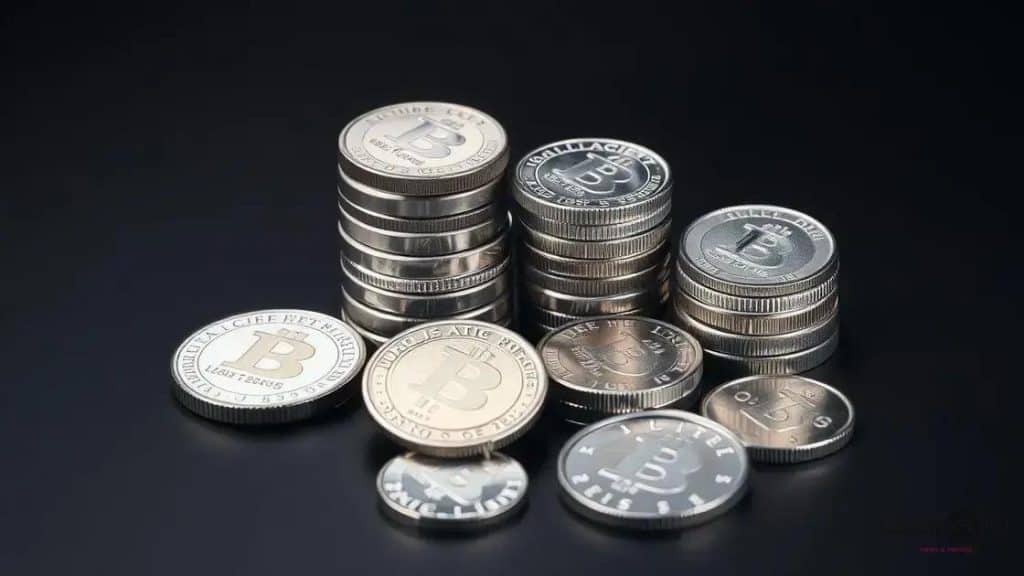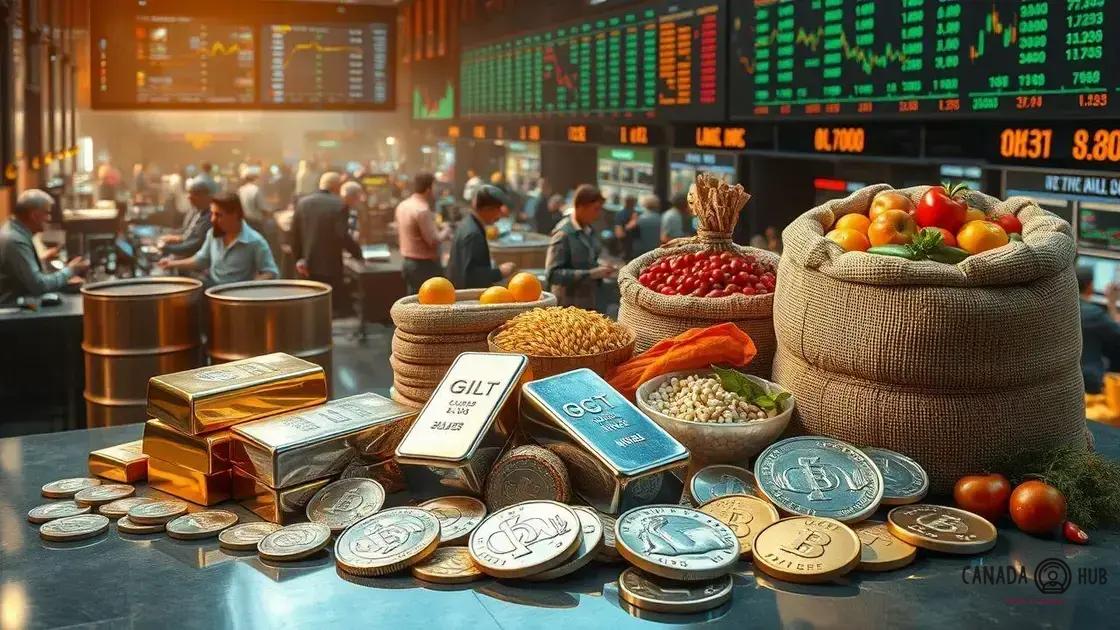Silver’s rising appeal as a hedge against market instability

Silver is emerging as a key investment option in volatile markets due to its dual role as a precious metal and industrial commodity, providing a hedge against inflation and strong demand from growing sectors.
Silver’s rising appeal as a hedge against market instability is capturing the attention of investors everywhere. Have you thought about how this metal could protect your assets in uncertain times?
Understanding silver’s historical role during crises
Understanding silver’s historical role during crises provides valuable insights into why many investors are now turning to this precious metal. Throughout history, silver has acted as a reliable hedge against economic turbulence.
For instance, during the Great Depression, many people turned to silver as a form of currency when traditional money lost value. This trend has repeated itself in many instances of financial instability, showcasing silver’s resilience.
The significance of silver in past economic downturns
Silver has always held a special place in investment portfolios. It is not just a precious metal; it’s a symbol of safety. Investors often flock to silver during periods of uncertainty.
- In the 1970s, when inflation soared, silver prices surged, drawing attention from investors looking to preserve wealth.
- During global conflicts, silver remained a critical asset, maintaining its value better than many other investments.
- The 2008 financial crisis saw a spike in silver purchases, as many sought to protect their savings.
This long-standing reputation as a safeguard highlights silver’s appeal during crises. As events unfold, many are curious about what the future might hold for this precious metal.
Silver vs. gold: A comparative look
While gold often steals the spotlight as a safe haven asset, silver’s role cannot be overlooked. People value silver for its affordability compared to gold, making it accessible to a broader range of investors. This accessibility plays a significant role in its popularity during fiscal downturns.
Moreover, silver’s industrial applications, combined with its investment value, create an intriguing dynamic in times of crisis. Unlike gold, which primarily serves as a store of value, silver also functions in various industries, such as electronics and renewable energy. Despite these differences, both metals often see price increases during economic instability, revealing their shared role as safe havens.
The dual nature of silver as both an industrial commodity and a monetary asset enriches its historical relevance during financial crises, making it worthy of consideration for modern investors.
In summary, understanding silver’s historical role during crises offers critical perspectives on its current appeal. Investors can learn from the past to make informed decisions about including silver in their portfolios. As with any investment, it’s essential to keep an eye on market trends and the potential for future upheavals.
How silver compares to other commodities

How silver compares to other commodities is crucial for understanding its unique position in the market. Unlike many other investment options, silver has both industrial and monetary value, making it a versatile asset.
For example, while gold is often seen as a safe haven, silver presents investment opportunities at a more affordable price. This affordability allows a wider range of investors to participate in the silver market.
Silver’s unique attributes
Many commodities fluctuate based on supply and demand, but silver holds a special place due to its dual nature. As an industrial metal, it is used in electronics, solar panels, and medicine, which creates a strong demand beyond mere investment.
- Silver’s conductivity makes it essential in electrical applications.
- Increasing use in green technologies boosts silver’s market appeal.
- The growing medical applications for silver underscore its broad utility.
This diverse usage ensures that silver maintains value, even when other commodities face declines. For instance, during economic downturns, silver often outperforms agricultural commodities like corn or wheat, due to its robust industrial demand.
Price movements: Silver vs. other commodities
In comparing prices, silver tends to move similarly to gold, but usually at a greater percentage change. This volatility can be an advantage for traders looking to capitalize on short-term movements. Additionally, silver’s price can be influenced by factors like inflation and market speculation, much like oil or other key commodities.
- Silver often mirrors trends in the gold market, enhancing its appeal as an investment.
- Factors such as inflation and currency value play significant roles in silver pricing.
- Silver’s intrinsic value, combined with market dynamics, leads to frequent price fluctuations.
As investors evaluate their options, understanding how silver compares to other commodities is vital. The interplay between silver’s diverse uses, price movements, and market trends gives it a distinct advantage in investment portfolios.
The impact of inflation on silver prices
The impact of inflation on silver prices is a significant topic for investors. Inflation often leads to higher demand for silver as a protective asset against currency devaluation.
As the cost of living rises, many individuals seek tangible assets like silver to preserve their wealth. When inflation occurs, the purchasing power of money decreases, prompting people to invest in commodities that typically hold their value better.
Historical trends of inflation and silver prices
Historically, silver has responded positively to inflationary pressures. For example, during the late 1970s, when inflation rates soared, silver prices reached all-time highs.
- In the 1980s, silver experienced price spikes reflective of high inflation.
- Inflation in recent years has also led to increased silver investments.
- As uncertainty grows, silver often becomes a favored option among commodities.
This trend reflects the perception of silver as a hedge during economic instability. Investors understand that when inflation rises, the value of currency diminishes, but physical assets like silver can retain or increase in value.
Current inflation and silver price movements
In the current economic climate, many analysts monitor inflation rates closely. A rise in inflation can lead to fluctuations in silver prices as demand increases.
- Silver typically gains traction during economic uncertainty.
- Market speculation during rising inflation can influence price volatility.
- The relationship between inflation rates and silver prices remains essential for investors.
Understanding the impact of inflation on silver prices is crucial for making informed investment choices. As inflation trends change, so do the strategies for including silver in financial portfolios.
Investment strategies for acquiring silver

Investment strategies for acquiring silver are essential for anyone looking to enter this market. Silver is a valuable asset, and knowing the right methods to invest can lead to greater financial success.
One common way to invest is through physical silver, which includes buying coins and bars. Investors appreciate the tangible nature of this asset, as it allows them to hold their investment directly.
Types of silver investments
There are different forms of silver investments you can consider. Each type has its benefits depending on your investment goals.
- Physical silver: This includes coins and bars, which you can store in a safe or bank vault.
- Silver ETFs: These funds track the price of silver and can be traded like stocks, offering liquidity.
- Mining stocks: Investing in companies that mine silver can provide exposure to price movements with potential additional returns.
While physical silver allows you to hold your investment, ETFs and mining stocks offer different advantages such as ease of trading and potential for dividends. Understanding these options is crucial for building a balanced portfolio.
Timing the market
Another key strategy involves timing your purchases. Silver prices can fluctuate due to market conditions, so being aware of economic indicators is vital. Watching inflation rates and demand trends in various industries will help you make informed decisions.
Many investors look for dips in prices to buy silver at lower costs. For example, when prices drop due to seasonal trends or economic downturns, this can present an excellent opportunity to acquire more silver.
Investment strategies for acquiring silver should also include a long-term perspective. Silver can experience volatility, but holding it through market cycles may lead to significant gains over time. Additionally, consider diversifying your silver investments to spread risk.
Future outlook: silver’s potential in volatile markets
Future outlook: silver’s potential in volatile markets is becoming an increasingly important topic among investors. As the global economy experiences fluctuations, many are turning to silver as a reliable asset.
The potential for silver in uncertain times is backed by its unique characteristics. As both a precious metal and an industrial commodity, silver can benefit from multiple market dynamics.
Increasing demand for silver
One of the driving factors for silver’s future is the growing demand in various sectors. Industries such as technology and renewable energy are utilizing silver more than ever.
- Silver plays a key role in solar panel production, which is rising due to a shift towards green energy.
- Electronics manufacturing utilizes silver for its conductivity, leading to increased usage as technology advances.
- Medical applications of silver, including antimicrobial treatments, are expanding, further boosting demand.
This diverse range of applications allows silver to maintain its value, even when traditional markets are under pressure. Investors are aware of this trend and may see silver as a hedge during economic downturns.
Price stability in uncertain times
Historically, silver has shown resilience during times of market volatility. When economic conditions become unpredictable, silver often serves as a safe haven for investors looking to protect their wealth.
As uncertainty continues in global financial markets, silver’s potential for price appreciation appears strong. Factors such as inflation, geopolitical tensions, and economic crises can lead to spikes in silver’s value.
The key for investors is to recognize the potential of silver in the context of changed market landscapes. By maintaining a diverse portfolio that includes silver, investors can better navigate the challenges posed by volatile markets.
FAQ – Questions about Silver as an Investment
Why should I consider investing in silver?
Investing in silver can provide a hedge against inflation and serve as a safe haven during market volatility.
What are the main types of silver investments available?
The main types include physical silver (coins and bars), silver exchange-traded funds (ETFs), and mining stocks.
How does inflation impact silver prices?
Inflation typically drives up silver demand as investors seek to protect their wealth against currency devaluation.
What industries are driving demand for silver?
Growing sectors like technology, renewable energy, and healthcare are increasing the demand for silver due to its unique properties.





